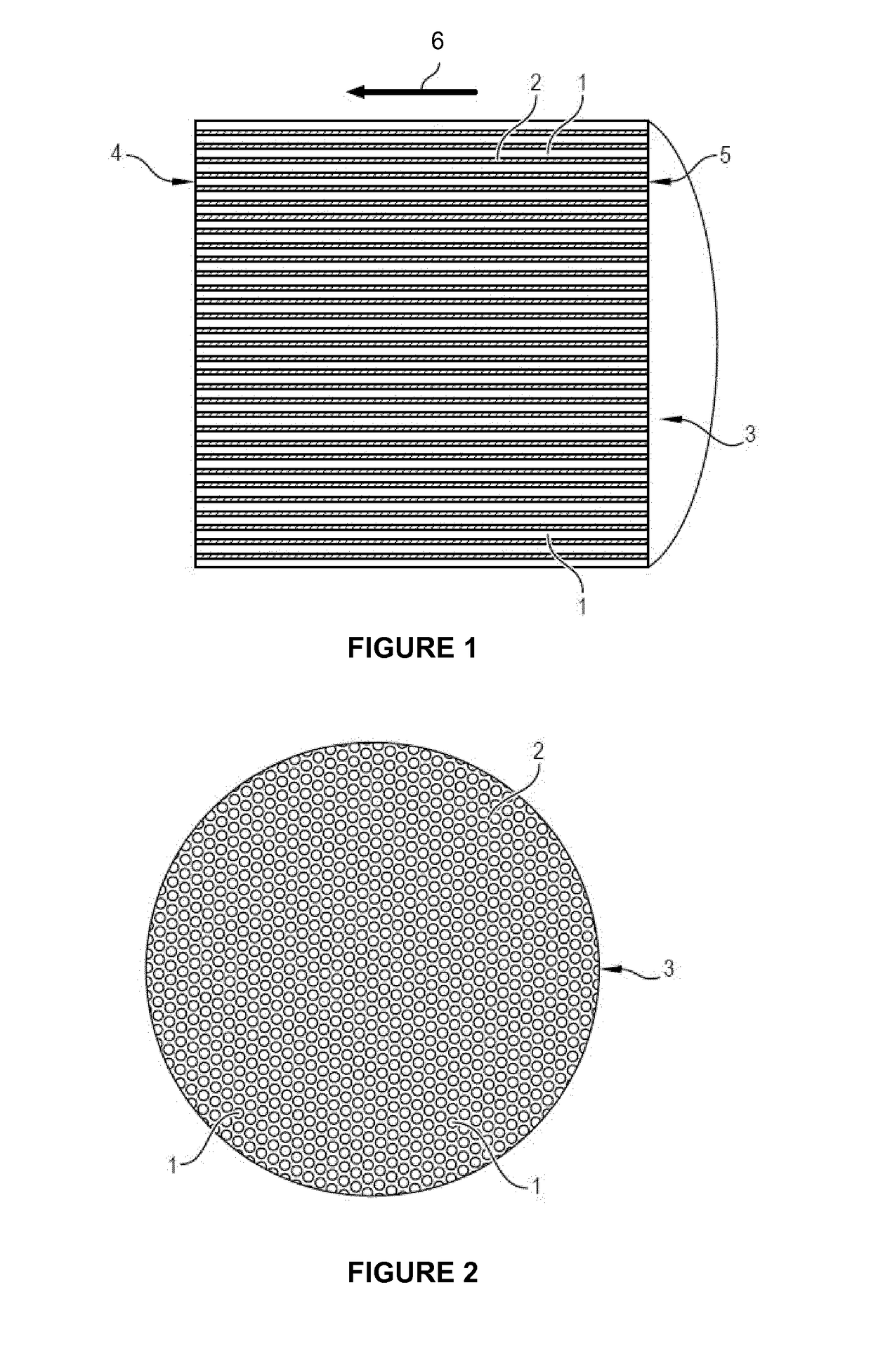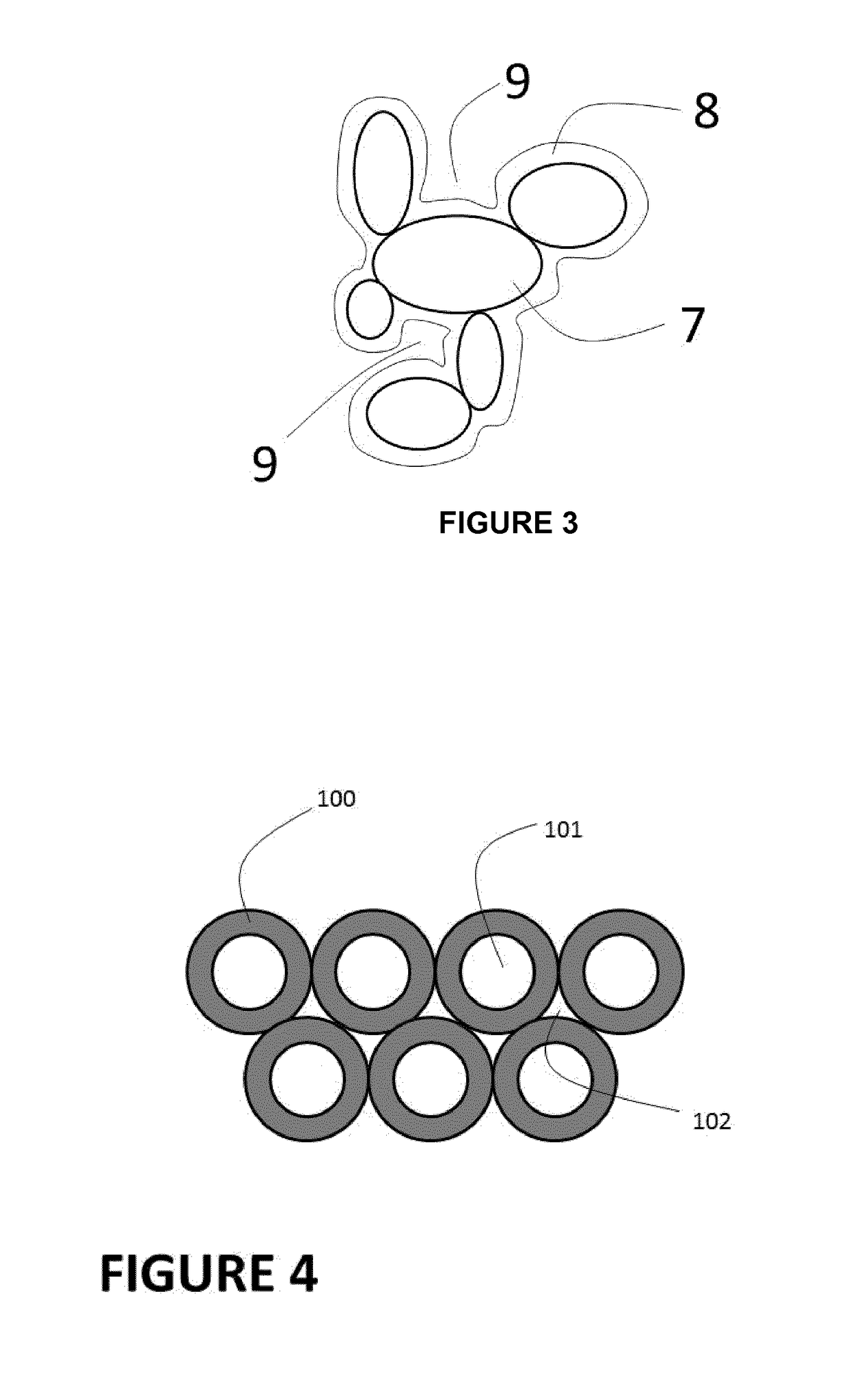Organic gel or liquid chromatography method
- Summary
- Abstract
- Description
- Claims
- Application Information
AI Technical Summary
Benefits of technology
Problems solved by technology
Method used
Image
Examples
example 1
ring of a Multicapillary Packing in an Anion Exchanger
[0571]The starting material is a thread in a tin and bismuth alloy in proportions of 58%, 42% by weight respectively. It has a diameter of 15 / 100 of a mm. The thread is covered by soaking with a thin layer of a mixture of styrene, of 8% by weight of divinylbenzene by weight, 0.4% by weight of a polymerization activator (azobis isobutyronitrile) and of a glass powder milled to 10 μm (one volume of glass powder for one volume of the solution). It is positioned for 24 hours at 70° C. under nitrogen. The thread is cut in rectilinear segments with a length of 200 mm. They are then introduced as a bundle with a diameter of about 4 mm in a glass tube with a length of 160 mm and an inner diameter 4 mm prepared beforehand.
[0572]A mixture of styrene, of 8% by weight of divinylbenzene and 0.4% by weight of a polymerization activator (t-butyl hydroperoxide) is then cast into the tube through interstices between the thread segments so as to t...
example 2
ring of a Multicapillary Packing in a Cation Exchanger
[0576]A monolith with porous walls of alpha alumina with a length of 160 mm having 100 conduits of a diameter of 0.45 mm distributed according to a square mesh with a side of 1.2 mm is produced by extrusion and sintering of an alpha alumina powder with an elementary diameter of 20 μm.
[0577]A mixture of 49 g of styrene, 1 g of divinylbenzene, 200 mg of a polymerization activator (t-butyl hydroperoxide) and 150 ml of pentane is then cast into the monolith so as to totally fill the porosity of the wall. The core of the conduits is drained from the liquid phase which it contains. The monolith brought to 50° C. so as to evaporate the majority of the pentane, and then shortly a vacuum is applied so as to enhance this evaporation. The deposit of monomers and of activator thereby deposited as a liquid film covering the wall of the alumina grains is polymerized for 24 hours at 120° C. under a nitrogen atmosphere.
[0578]The thereby produced...
example 3
ring of a Multicapillary Packing Having Porosity
[0579]A mixture is prepared containing 8 g of hydroxyethyl methacrylate, 32 g of divinylbenzene, 445 mg of azobisisobutyronitrile, 60 g of dodecanol and the mixture is degassed in nitrogen for 20 minutes.
[0580]This mixture is brought to 70° C. in 24 hours. The mixture polymerizes.
[0581]The thereby produced monolith A is washed by percolating THF for 30 minutes and drying in the oven at 90° C.
[0582]The monolith A is milled under liquid nitrogen until the desired diameter of the grains is obtained.
[0583]The porosity of these grains is filled with a paraffinic wax melting at 80° C. by adding under hot conditions the molten wax into the powder with stirring.
PUM
| Property | Measurement | Unit |
|---|---|---|
| Diameter | aaaaa | aaaaa |
| Diameter | aaaaa | aaaaa |
| Diameter | aaaaa | aaaaa |
Abstract
Description
Claims
Application Information
 Login to View More
Login to View More - R&D
- Intellectual Property
- Life Sciences
- Materials
- Tech Scout
- Unparalleled Data Quality
- Higher Quality Content
- 60% Fewer Hallucinations
Browse by: Latest US Patents, China's latest patents, Technical Efficacy Thesaurus, Application Domain, Technology Topic, Popular Technical Reports.
© 2025 PatSnap. All rights reserved.Legal|Privacy policy|Modern Slavery Act Transparency Statement|Sitemap|About US| Contact US: help@patsnap.com



